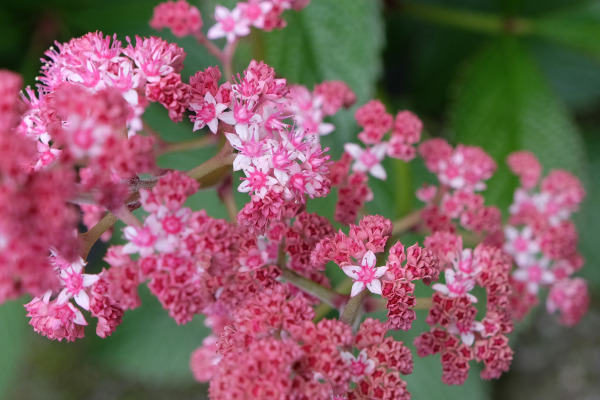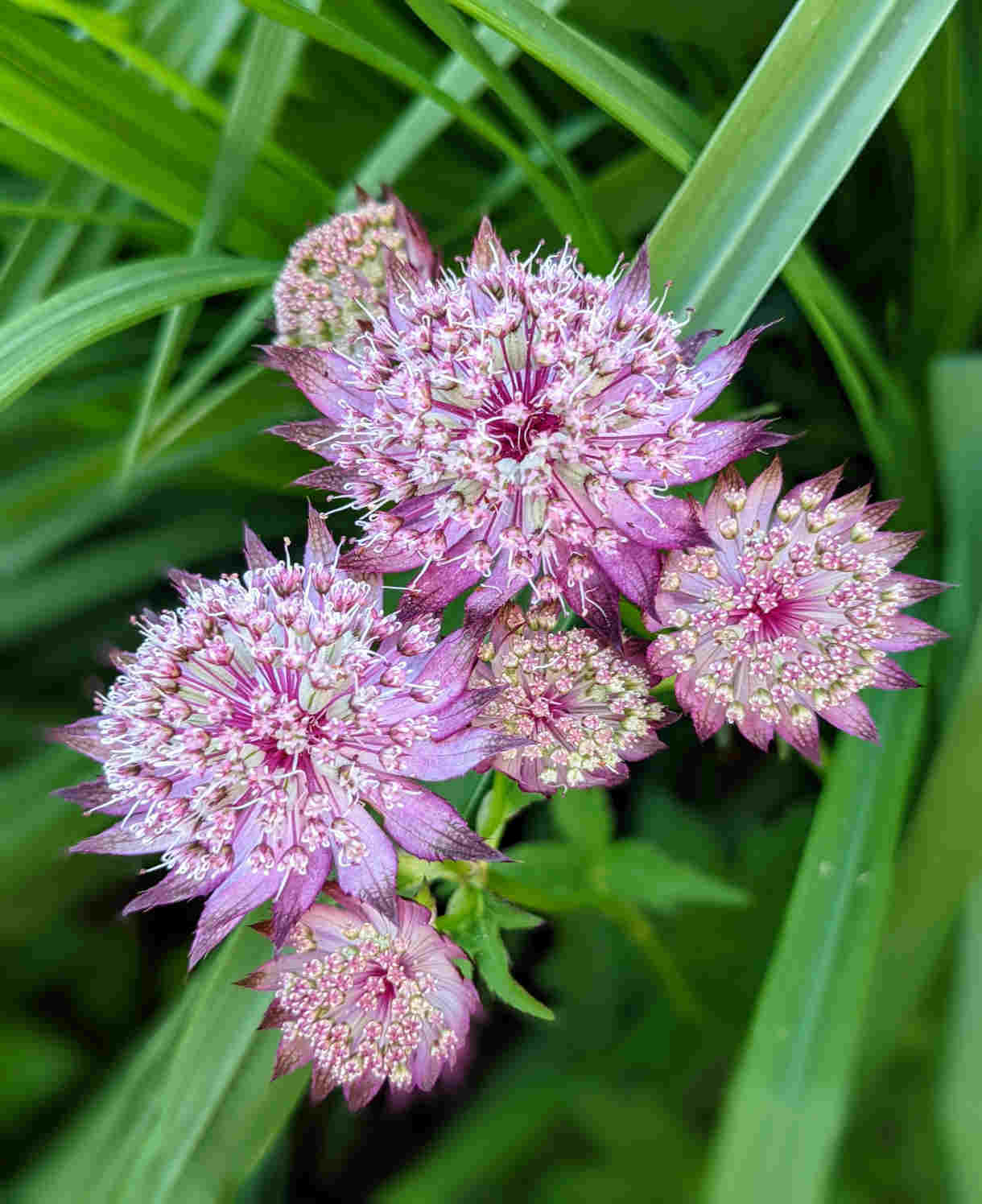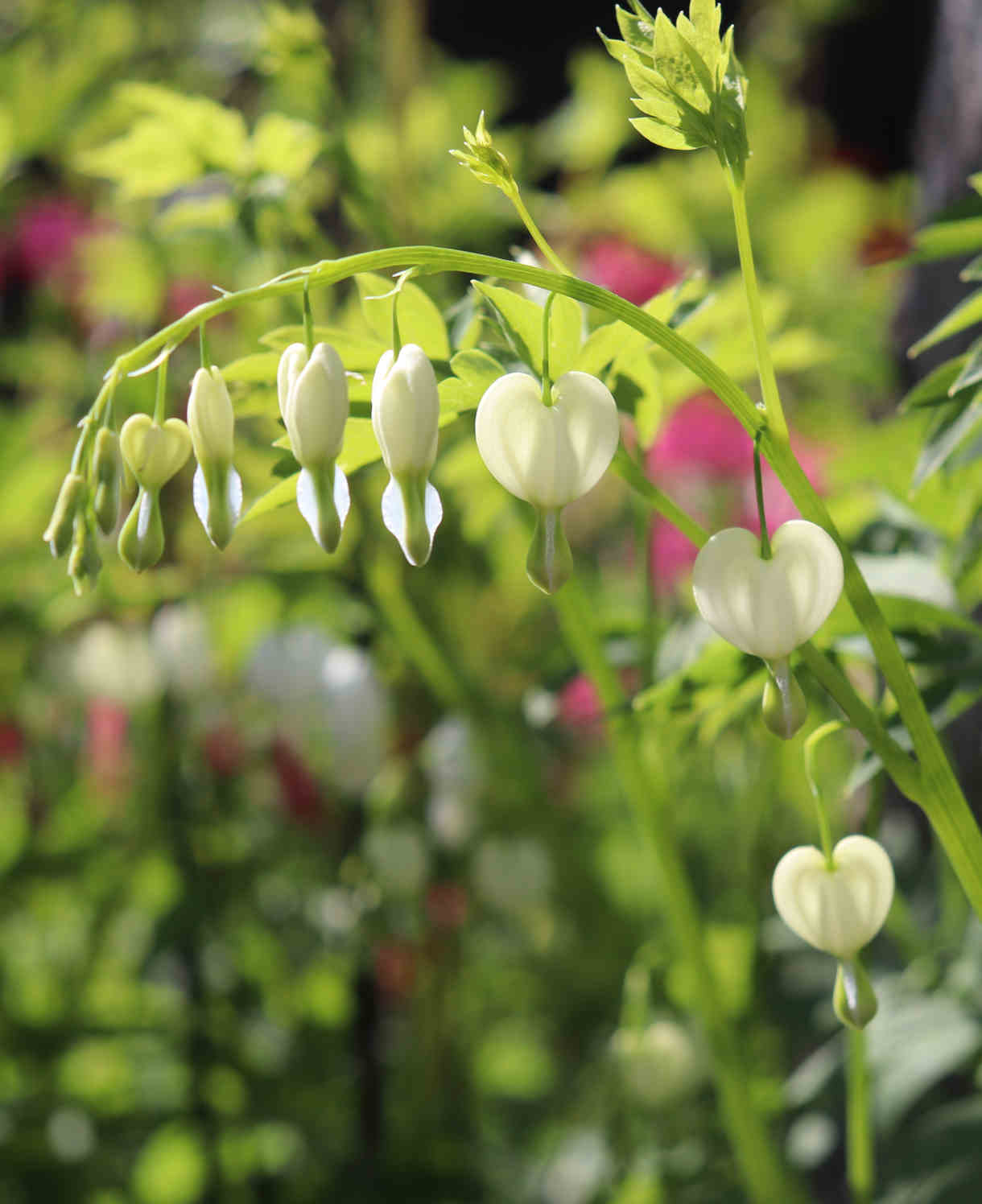How to grow Rodgersia
Rodgersia are tough, vigorous, clump forming rhizomatous perennials with large, divided and deeply veined leaves borne from March to October. In summer tall sprays of fluffy plumes in either creamy white or pink emerge above the foliage for dramatic, sculptural impact. A moisture loving plant which grows well as a pond marginal or in a bog garden.
We currently supply two varieties - pinnata ‘Bronze Peacock’ and sambucifolia – both of which make excellent weed-suppressing groundcover once established. Plants grow to a metre or more in height and spread over two to five years. These plants grow beside streams in China, Tibet and Nepal. Hardy (H6), herbaceous perennials able to tolerate temperatures down to -15 to -20°C so should not need any additional winter protection throughout the UK.

Zantedeschia is a genus of flowering plants from the family Araceae and is native to southern Africa. With a rich history dating back to the Ancient Romans, these deciduous or semi-evergreen perennials have been used as a symbol of celebration. Zantedeschia was Named after Professor Giovanni Zantedeschia, an Italian botanist.
There are two main forms of Zantedeschia: hardy and tender. Hardy forms of the plant can be grown outdoors, enjoy moist soil and full sun or partially shaded conditions - these are known as Arum lilies. Tender forms of Zantedeschia prefer being grown in containers or pots and should be brought inside over the winter - these are known as Calla lilies.
With tuberous flora in all colours from whites, yellows and oranges to deep reds and purples, Zantedeschias are not to be overlooked in any garden, as long as they have sufficient sunlight to grow in.
Ready to learn more about growing Zantedeschia? Read on for all there is to know...

Key Information
Soil pH
Position
Hardiness


Where & when to plant Rodgersia
Position - Dappled shade, partial sun and shade.
Soil - Moist, well-drained or poorly drained.
Flowering Period - Summer.
Hardiness - Hardy (H6) herbaceous perennial.
Rodgersia requires deep, fertile soil which is consistently moist in order to thrive. A spot next to a stream or pond, or in a damp area which is partly shaded is the perfect location for Rodgersia.
Spring or autumn are the best seasons for planting as this will allow your young plants to put down roots whilst the soil is slightly warm. If you are purchasing plants in winter, it would be wise to leave the plants in their containers in a sheltered location until the weather warms up before planting out. For summer planting, extra care will be needed to ensure young plants are well watered and do not dry out.
The feathery plumes of Rodgersia flowers look great when planted in groups or swathes, so place several plants together for impactful colour and texture if you have the space.
How to plant Rodgersia
Avoid planting in a spot which receives full sun as bright sunlight will scorch the leaves and dry out your soil more quickly - your flowers will not last as well in the sun as in a slightly shaded area.
It is important to allow enough space for your plants to mature and spread whilst not overshadowing other smaller plants in your garden. Rodgersia can reach heights of 1.2m tall so be mindful of the placement within your planting scheme.
Dig a hole which is slightly deeper and wider than your potted plant in order to allow roots to spread. Although Rodgersia love damp soil, they require a site which has a degree of drainage (they are not pond plants), so add a few handfuls of grit to the planting hole if your soil is prone to waterlogging. Next, add a generous amount of well-rotted manure or homemade compost to enrich your soil and feed your plants.
Gently tease your Rodgersia out from its pot and loosen the roots a little before placing in the hole with the crown of the plant just below the surface of your soil. Fill in around the edges and base of your plant with more soil and firm around the base before watering in well.
Water your young plants at least every other day until they have established themselves.

What to plant with Rodgersia
Rodgersia work perfectly in a shady border, bog garden, or next to water.
The flower colour can range from whites and creams to pastel or deep pinks, and the foliage may be green or bronze-red in tone.
Plant Rodgersia with other plants which share the same growing conditions. Lush green Hosta and soft and textural Ferns provide wonderful complimentary foliage companions.
Delicate flowering shade lovers such as Dicentra, Solomon’s seal, Lily of the Valley, Astrantia, Pulmonaria, Heuchera, Tiarella, and Candelabra primulas all compliment Rodgersia and will happily grow side by side.
Please contact our wonderful Customer Care Team at Hayloft if you would like any further growing guidance or planting suggestions - we will be more than happy to help.



How to care for Rodgersia
These easy and rewarding perennials will settle and thrive relatively quickly in the right spot and then be happy with very little care.
Water only during dry conditions, especially if your plants are not grown close to water. If they are close to water, they should be able to access their own supply once roots have established.
Rodgersia blooms also make fantastic, long-lasting cut flowers and look wonderful in the vase adding height and a feather-like texture to your arrangements. The blooms will last up to 2 weeks in the home if you regularly refresh the water.
Apply a mulch of leaf mould or homemade compost to the base of plants in autumn to feed your soil and add nutrients which will help with the formation of next year’s flowers.
The flower plumes can be left on your plants once faded as they add attractive texture throughout autumn and early winter. In late winter, you should prune back and compost all of last year’s foliage and flowers to make way for the fresh spring growth.
How to propagate Rodgersia
Rodgersia can be easily propagated by division. Established plants should be divided every 3-4 years which will both re-invigorate your mature plants and provide you with new plants for your garden, or to share.
Ideally, you should do this in early spring. Firstly, water your Rodgersia generously which will help to loosen the roots, then using a garden fork, dig around each plant and lift out the whole clump. Separate the root ball into several smaller sections by slicing it apart with a sharp spade.
You can either pot up or re-plant your new divisions into a suitable location in your garden. Water your new divisions well until established, treating them in the same way as a new plant.
Common Rodgersia questions
When should I prune Rodgersia?
Flower stems can be cut back once they fade or left over winter for longer lasting interest. Foliage will naturally die back around mid-autumn time and can be removed then or left until late winter/early spring if you remove the spent flower stems then.
Can you grow Rodgersia in containers?
Rodgersia can be grown in a suitably sized, deep container. Bear in mind this will need to be checked often to make sure the soil does not dry out. Plants will spread extensively over 2-5 years so pick and appropriately sized container and repot as needed.





